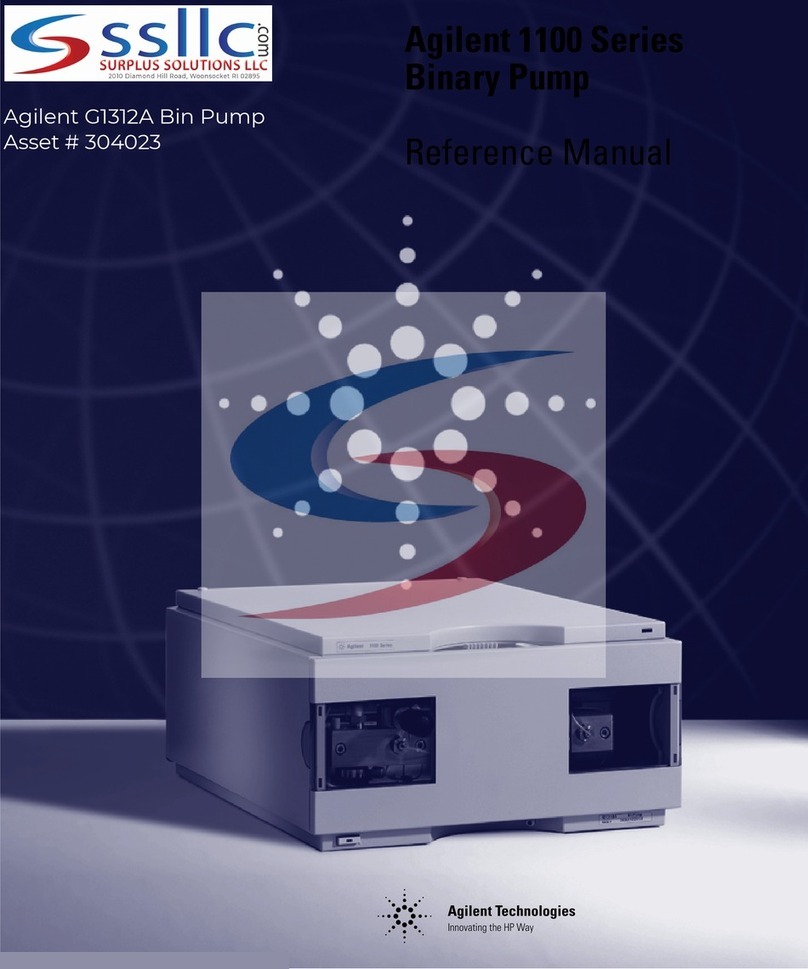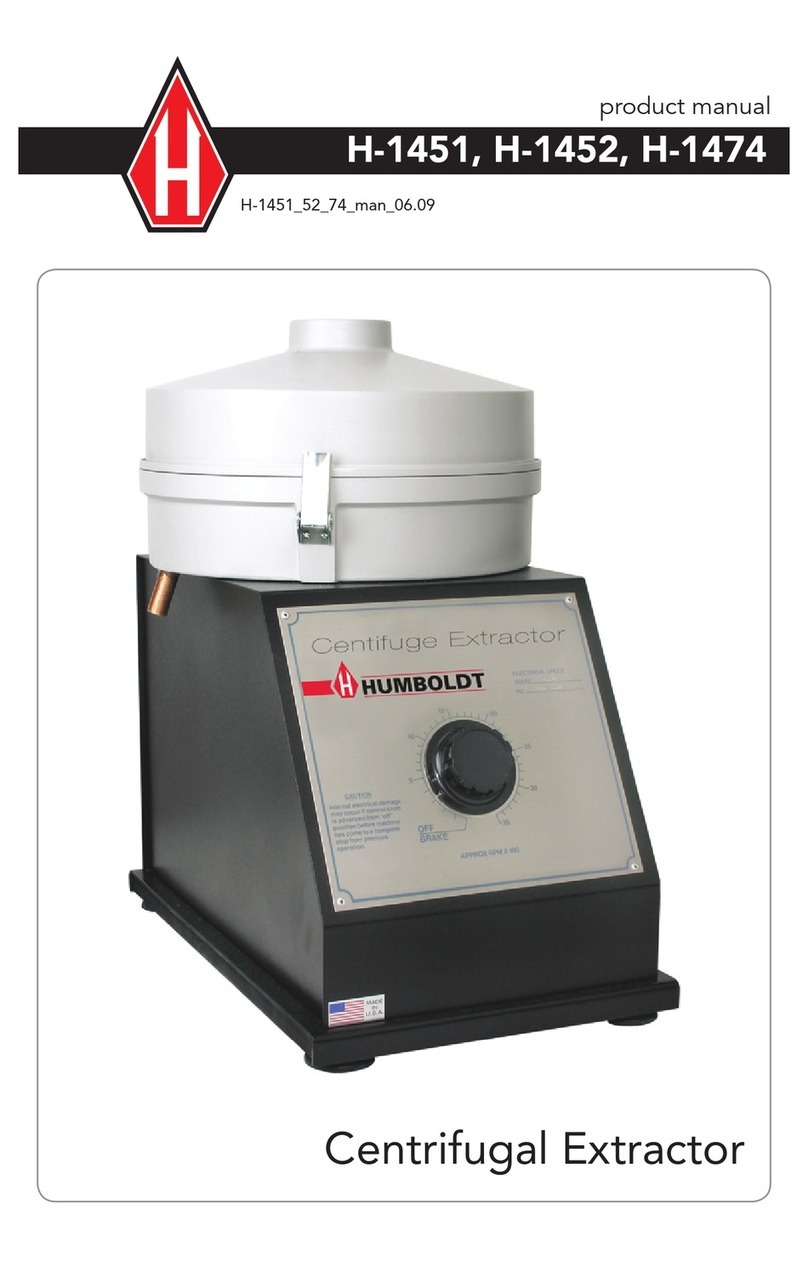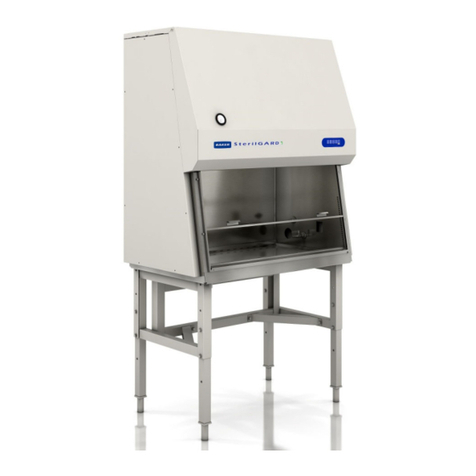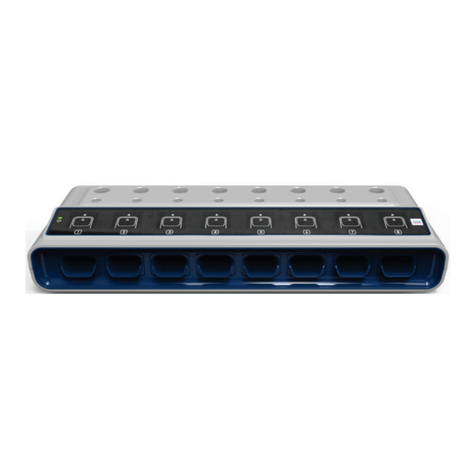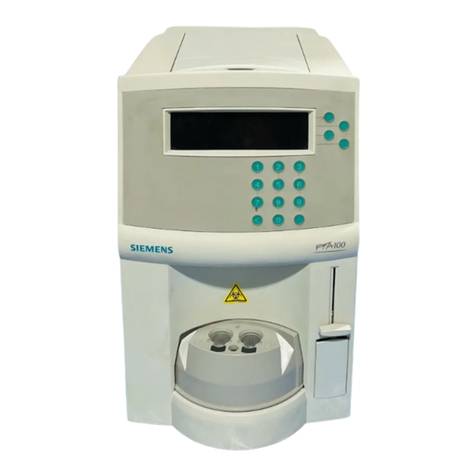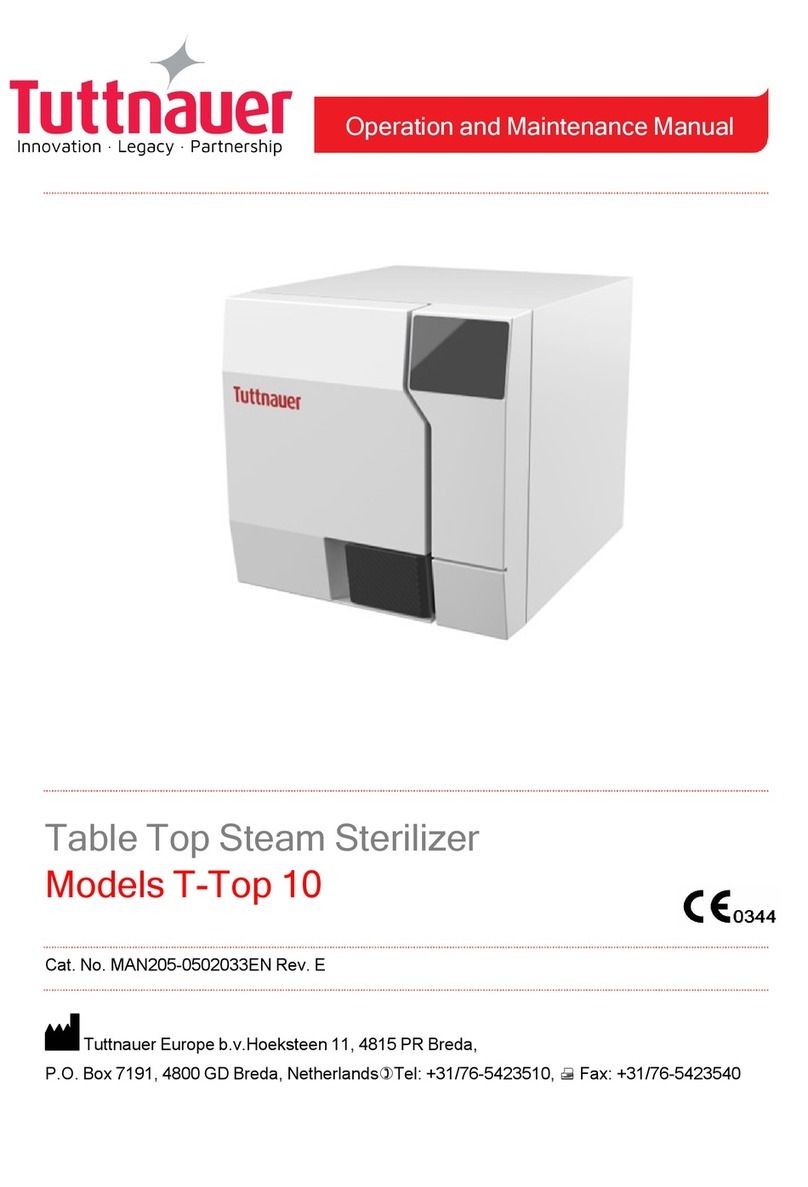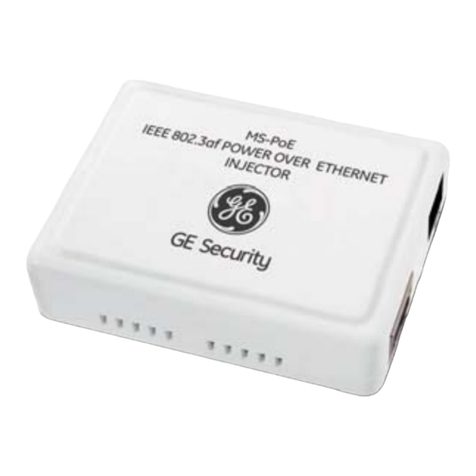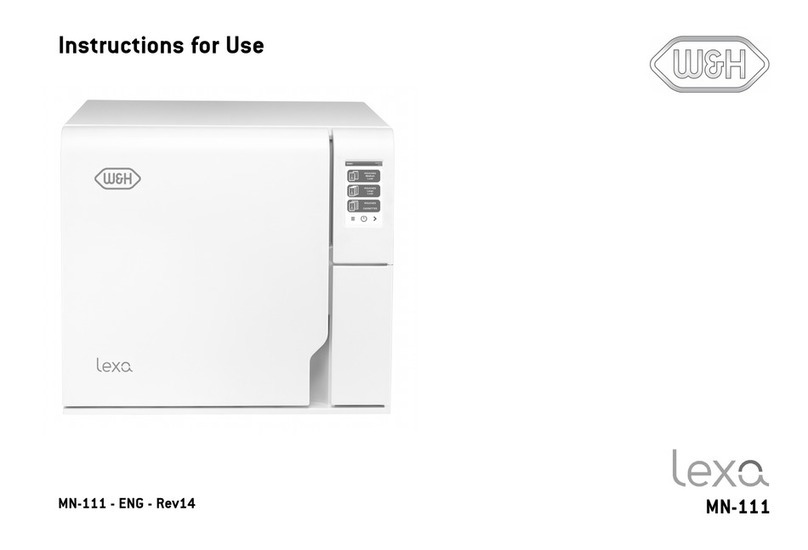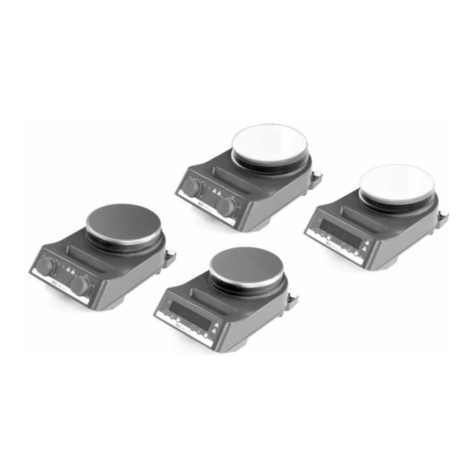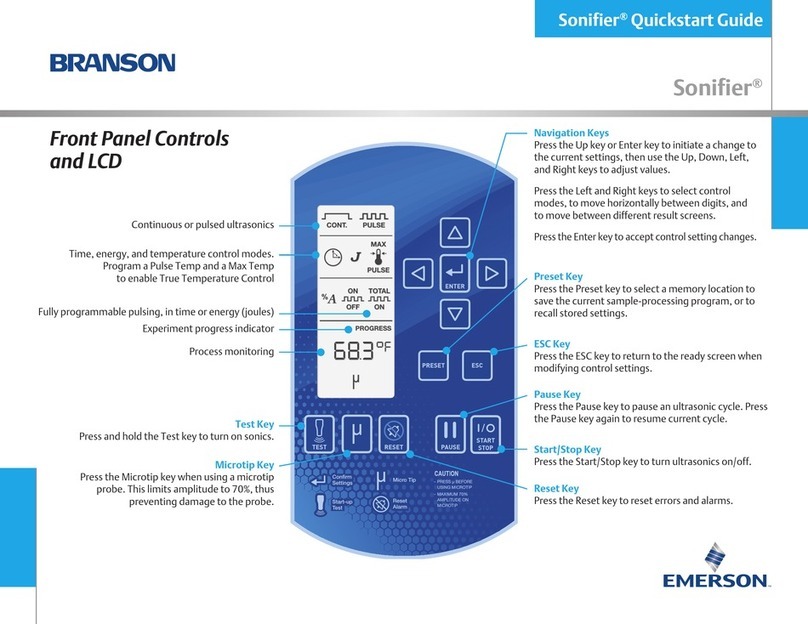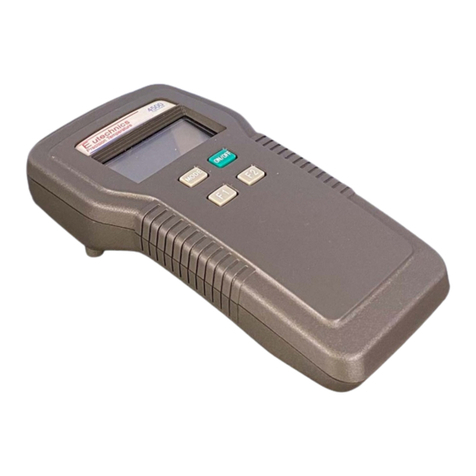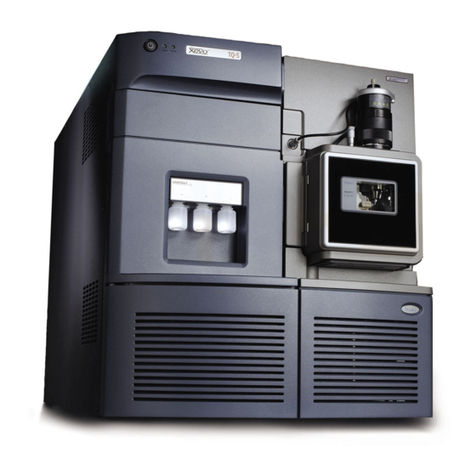Dilon Navigator 2.0 Troubleshooting guide

Gamma Detection system
Navigator 2.0
User/Service Manual
Manufactured by: Authorized European Representative:
Dilon Technologies, Inc. AG Medical
12050 Jefferson Avenue Route de l'Orme,
Suite 340 Parc des Algorithmes - Imm. "Homère"
Newport News, VA 23606 91190 Saint-Aubin
USA France
Phone: 1-844-DILONNAV http://ag-medical.com/

Navigator 2.0 User Manual & Service Guide
141-00002-001 Rev 3 -2- Revised 10/16/2018
Important Note
All personnel that will interact with this Navigator 2.0 System and Probes should read this Manual and Service
Guide to ensure proper use, handling, storage and maintenance.
This document and the information contained herein, is proprietary information of Dilon Technologies and
may not be reproduced, copied in whole or in part, adapted, modified, disclosed to others, or disseminated
without prior written consent of Dilon Technologies. This document is intended to be used by customers as
part of their Dilon Technologies equipment purchase.
Dilon Technologies provides this document without warranty of any kind, implied or expressed, including, but
not limited to, the implied warranties of merchantability and fitness for a particular purpose.
Dilon Technologies has taken care to ensure the accuracy of this document. However, Dilon Technologies
assumes no liability for errors or omissions, and reserves the right to make changes without further notice to
any products herein, to improve reliability, function, or design. Dilon Technologies may make improvements
or changes in the products or programs described in this document at any time.
Navigator 2.0TM is a trademark of Dilon Technologies.
Other trademarks and trade names are those of their respective owners.
Copyright Notice
Copyright 2018 Dilon Technologies, Newport News, VA 23606 United States of America.
Trademarks
Dilon Technologies™is a registered trademark of Dilon Technologies.
All other company and product names are trademarks or registered trademarks of their respective owners.
Part Number
141-00002-001 Rev 3 / October, 2018

Navigator 2.0 User Manual & Service Guide
User Manual: Table of Contents
1. Introduction .......................................................................................................................................... 5
Description ............................................................................................................................................ 5
Intended Use ......................................................................................................................................... 5
Indications for Use................................................................................................................................. 5
Manufacture and Distribution................................................................................................................ 5
Trademarks............................................................................................................................................ 5
Regulatory and Safety Requirements ..................................................................................................... 6
2. System Overview and Components .................................................................................................... 13
3. Precautions ......................................................................................................................................... 14
3A. General.......................................................................................................................................... 14
3B. Control Unit, Battery, and Charger ................................................................................................. 14
3C. Probe............................................................................................................................................. 14
4. Control Unit, Battery, Cables, and Co-Pilot ......................................................................................... 15
4A-1. Control Unit Features: Front ....................................................................................................... 15
4A-2. Control Unit Features: Back ........................................................................................................ 18
4B. Battery (Part # N2-8500-00) ........................................................................................................... 19
4D. Optional Co-Pilot™Device (Part # GP-6801-00) .............................................................................. 21
4E. Useful Adjustments That Can Be Made During Procedures ............................................................. 23
5. Cleaning and Disinfection of Navigator Probes and Cables ................................................................. 24
5A. Cleaning Probes............................................................................................................................. 24
5B. Radioactive Decontamination Procedure –OPTIONAL.................................................................... 26
5C. Cleaning/Storing Control Unit & Gain Module ................................................................................ 26
6. Probe Connectivity and Use ................................................................................................................ 27
6A. Navigator 2.0 with Wireless Pilot Probe ......................................................................................... 27
7. Troubleshooting.................................................................................................................................. 30
8. Specifications ...................................................................................................................................... 32
8A. Navigator 2.0 System Specifications............................................................................................... 32
8B. Navigator 2.0 System Lifetime........................................................................................................ 33
Support Items ............................................................................................................................................. 34
10A. Product Part Numbers ................................................................................................................. 34
10B. Sterile Drape................................................................................................................................ 34
9. Maintenance....................................................................................................................................... 35
11A. Overview ..................................................................................................................................... 35
11B. Verification of Standard Gain (Calibration Quick Test) .................................................................. 35
11C. Fuse Replacement Procedure....................................................................................................... 37

Navigator 2.0 User Manual & Service Guide
Service Manual
141-00002-001 Rev 3 -4- Revised 10/16/2018
10. Repair.................................................................................................................................................. 38
11. Recycling ............................................................................................................................................. 39
12. Limited Warranty ................................................................................................................................ 40

Navigator 2.0 User Manual & Service Guide
Service Manual
141-00002-001 Rev 3 -5- Revised 10/16/2018
USER MANUAL
1. Introduction
Description
The Navigator 2.0 System detects gamma photons, such as those produced by radioactive decay. The Navigator
2.0 System is a portable, battery powered system.
System use requires the Navigator 2.0 Control Unit, which allows the user to adjust the system's settings and
produces a variety of signal outputs. The control unit is powered by battery.
The Control Unit is used with the following Navigator™probe models:
·14mm Wireless Pilot Probe™(angled tip)
·14mm Standard Lymphatic Mapping Probes (angled tip)
The system is supplied non-sterile. This manual includes guidelines for the use of the probes and accessories
within the sterile field.
Intended Use
For the detection and quantification of gamma radiation from gamma-emitting isotopes in the body or tissues.
Use for non-imaging procedures to measure the amount of radionuclide absorbed by a particular organ or
body region.
Indications for Use
For the detection and quantification of gamma radiation from gamma-emitting isotopes in the body or tissues.
Use for non-imaging procedures to measure the amount of radionuclide absorbed by a particular organ or
body region in open-surgical procedures.
Manufacture and Distribution
The system is manufactured and distributed by Dilon Technologies of Newport News, VA. Please direct all
inquiries about the Navigator 2.0 to Dilon Technologies.
Trademarks
The following are trademarks of Dilon Technologies: Navigator 2.0™, Wireless Pilot Probe™, Dilon Navigator™,
Dilon Technologies Navigator GPS™, Dilon Technologies Navigator™, Dilon Technologies Navigator 2.0™, and
Navigator™when used in context with the above.

Navigator 2.0 User Manual & Service Guide
Service Manual
141-00002-001 Rev 3 -6- Revised 10/16/2018
Regulatory and Safety Requirements
The Dilon Navigator System including Probes and accessories complies with the following standards:
EC Directives
EMC Directive 89/336/EEC
Group l, Class B
EN 55011
EMC Directive 89/336/EEC
IEC 60601-1-2: 3rd Edition
Reciprocal Interference
This product has been tested and verified to ensure that there are no issues or concerns regarding
reciprocal interference. This includes EMI, EMC and RF. This product has been certified and tested
by 3rd party testing facilities. List of standards is as follows:
•Medical Electrical Equipment - Part 1: General requirements For Safety 1: Collateral
Standard: Safety Requirements For Medical Electrical Systems –IEC 60601-1-1: 3rd Ed.
•Medical Electrical Equipment - Part 1: General Requirements For Safety - Collateral Standard:
Electromagnetic Compatibility - Requirements and Tests –IEC 60601-1-2: 3rd Ed.
Safety
•Medical Electrical Equipment - Part 1: General requirements For Safety 1: Collateral
Standard: Safety Requirements For Medical Electrical Systems –IEC 60601-1: 2nd & 3rd Ed.
•Medical Electrical Equipment - Part 1: General Requirements For Safety - Collateral Standard:
Electromagnetic Compatibility - Requirements and Tests –IEC 60601-1-2: 3rd Ed.
•Medical Electrical Equipment - Part 1-6: General Requirements For Safety - Collateral
Standard: Usability - IEC 60601-1-6: 3rd Ed.
•Information supplied by the manufacturer of medical devices- EN 1041:2008
•Symbols for use in the labeling of medical devices - EN 980 :2008
•CAN/CSA C22.2 No. 60601-1, "Medical Electrical Equipment, Part 1: General Requirements
for Safety & Essential Performance; issued 2008-02-01 Ed. 2
•AS/NZS 3200-1-0, Deviations to IEC 601-1 for Application in Australia and New Zealand
CAUTION: Federal (USA) law restricts this device to sale and use by, or on the order of, a
physician.

Navigator 2.0 User Manual & Service Guide
Service Manual
141-00002-001 Rev 3 -7- Revised 10/16/2018
CAUTION: Medical Electrical Equipment needs special precautions regarding EMC and
needs to be
installed and put into service according to the EMC information provided in
table 1, 2, 4 and 6.
CAUTION: Portable and Mobile RF Communications Equipment can affect Medical
Electrical
Equipment.
WARNING: The use of accessories, transducers and/or cables other than those specified,
with the
exception of those sold by the manufacturer as replacement parts for internal
components, may result
in increased emissions or decreased immunity of the equipment
or system
WARNING: The equipment or system should not be used adjacent to or stacked with
other equipment
and that if adjacent or stacked use is necessary, the equipment or
system should be observed to verify
normal operation in the configuration in which it will
be used
WARNING: The Control unit and Wireless probe may be interfered with by other equipment, even if
that other
equipment complies with CISPR Emissions requirements. See Specifications for frequency
range operation of the system.
Table 1 –Guidance and Manufacturer’s Declaration –Emissions
All ME
Equipment and ME Systems
EmissionsTest
Compliance
Electromagnetic Environment –Guidance
RF Emissions
CISPR 11 Group 1
The Navigator II uses RF energy only for its internal
function. Therefore, its RF emissions are very low and
are not likely to cause any interference in nearby
electronicequipment.
Guidance and Manufacturer’s Declaration - Emissions
The Navigator II is intended for use in the electromagnetic environment
specified below. The customer or user of the Navigator II should ensure that it is
used in such an environment.

Navigator 2.0 User Manual & Service Guide
Service Manual
141-00002-001 Rev 3 -8- Revised 10/16/2018
Table 2 –Guidance and Manufacturer’s Declaration –Immunity
All ME
Equipment and ME Systems
ImmunityTest
IEC 60601
Test Level
Compliance
Level Electromagnetic
Environment–
Guidance
ESD
IEC61000-4-2 ±6kV Contact
±8kV Air ±6kV Contact
±8kV Air Floors should be
wood, concrete or
ceramic tile. If floors
are synthetic, the r/h
should be at least
30%
PowerFrequency
50/60Hz
MagneticField
IEC61000-4-8
3A/m
3A/m
Powerfrequency
magnetic fields should
be that of a typical
commercial or hospital
environment.
Guidance and Manufacturer’s Declaration –Immunity
The Navigator II is intended for use in the electromagnetic environment
specified below. The customer or user of the Navigator II should ensure that it is
used in such an environment.

Navigator 2.0 User Manual & Service Guide
Service Manual
141-00002-001 Rev 3 -9- Revised 10/16/2018
Table 4 –Guidance and Manufacturer’s Declaration –Immunity
ME
Equipment and ME Systems that are NOT Life-supporting
ImmunityTest
IEC 60601Test Level
Compliance
Level Electromagnetic
Environment–
Guidance
RadiatedRF
IEC61000-4-3
3 V/m
80 MHz to 2.5 GHz
(E1)=3V/m
Portable andmobile
communications
equipment should be
separatedfrom the
Navigator II by no
less thanthe
distances
calculated/listed
below:
D=(3.5/V1)(SqrtP)
150kHzto 80MHz
D=(3.5/E1)(SqrtP)
80 to 800 MHz
D=(7/E1)(Sqrt P)
800 MHz to 2.5 GHz
where P is the max
power in watts and D
is the recommended
separation distance in
meters.
Field strengthsfrom
fixed transmitters, as
determined by an
electromagneticsite
survey, should beless
thanthe compliance
levels (V1 and E1).
Interferencemay
occur in the vicinity of
equipmentcontaining
atransmitter.
Guidance and Manufacturer’s Declaration –Immunity
The Navigator II is intended for use in the electromagnetic environment
specified below. The customer or user of the Navigator II should ensure that it is
used in such an environment.

Navigator 2.0 User Manual & Service Guide
Service Manual
141-00002-001 Rev 3 -10- Revised 10/16/2018
Table 6 –Recommended Separation Distances between portable and mobile RF
Communications
equipment and the Navigator II
ME Equipment and ME Systems that are NOT Life-supporting
Max Output Power
(Watts) Separation (m)
150kHzto 80MHz
D=(3.5/V1)(SqrtP)
Separation (m)
80 to 800MHz
D=(3.5/E1)(SqrtP)
Separation (m)
800MHzto 2.5GHz
D=(7/E1)(Sqrt P)
0.01
0.11667
0.11667
0.23333
0.1
0.36894
0.36894
0.73785
1
1.1667
1.1667
2.3333
10
3.6894
3.6894
7.3785
100
11.667
11.667
23.333
Recommended Separations Distances for the Navigator II
The Navigator II is intended for use in the electromagnetic environment in which
radiated disturbances are controlled. The customer or user of the Navigator II can
help prevent electromagnetic interference by maintaining a minimum distance
between portable and mobile RF Communications Equipment and the Navigator II
as recommended below, according to the maximum output power of the
communications equipment.

Navigator 2.0 User Manual & Service Guide
Table 1A. Explanation of Symbols
Type-CF Equipment
RX only Caution: Federal
(USA) law restricts this device
to sale and use by, or on the
order of, a physician.
Probe Date of Manufacture
Data Port Manufactured by
Eject
or
Consult instructions for use
Attention, consult
accompanying documents Temperature limitation
Remote Count Control Humidity limitation
WEEE Symbol (EU only) Serial number
Calibrate Control Catalogue number
Fuse European Authorized
Representative
Battery Batch code

Navigator 2.0 User Manual & Service Guide
141-00002-001 Rev 3 -12- Revised 10/16/2018
Table 1A. Explanation of Symbols (Continued)
Battery Power Level Caution: High Voltage
Acceptable shipping/storage conditions: -15° C to 40° C
FCC statements: “This device complies with part 15 of the FCC Rules. Operation is subject
to the following two conditions: (1) This device may not cause harmful interference and (2)
this device must accept any interference received, including interference that may cause
undesired operation.”
IC statements: “This device complies with Industry Canada license-exempt RSS
standard(s). Operation is subject to the following two conditions: (1) This device may not
cause interference and (2) this device must accept any interference, including interference
that may cause undesired operation of the device.”
Cet appareil est conforme avec Industrie Canada RSS exemptes de licence standard (s).
Son fonctionnement est soumis aux deux conditions suivantes: (1) Ce 12nterferenc ne doit
pas causer d’interférences, et (2) cet appareil doit accepter toute 12nterference, y compris
les interferences qui peuvent causer un mauvais fonctionnement de l’appareil.

Navigator 2.0 User Manual & Service Guide
141-00002-001 Rev 3 -13- Revised 10/16/2018
2. System Overview and Components
Table 2A. Probe Dimensions
Probe Tip Diameter Tip Angle Length Weight
Wireless Pilot Probe
14mm
30
260mm
255g
Standard Lymphatic Mapping Probes 14mm 35 220mm 185g
Control Unit Battery
2-bay Battery
Charger and
Line Cord
Wireless Pilot Probe
Battery
Navigator 2.0 Control Unit
14 mm Wireless Pilot Probe
14 mm Standard Sentinel Node Mapping
Probe

Navigator 2.0 User Manual & Service Guide
141-00002-001 Rev 3 -14- Revised 10/16/2018
3. Precautions
3A. General
·The output of this system is not to be considered a diagnostic measure of the extent of disease in the
patient, nor the recommended source of therapy.
·Failure to thoroughly review and adhere to the information contained in this User and Service Manual
may pose a potential hazard to the patient and/or user and may void the warranty.
3B. Control Unit, Battery, and Charger
·During system use, maintain electrical isolation of the patient. Do not connect the probe, cable (if
used), or the internal circuit of the control unit to earth ground, or to other voltage potentials.
·Maintain patient electrical isolation. Do not defeat the electrical isolation of the surface of a probe
cable (if used), and the control unit housing. These isolate the battery-power circuit inside the control
unit, the conductors inside the probe cable, the probe surface, and the patient.
·When optional system components are used with the system, maintain probe and patient electrical
isolation from earth ground. The optional components include the Co-Pilot™Device, the probe drape,
the Top Gun™Collimator, and Navigator 2.0 cart.
·In the operating room, use the charger at a distance of six feet or greater from the patient. The charger
has a rating in the United States of a “patient proximity charger.”
·Fully charge the battery before use in the system.
·Replace the wireless probe battery with a new battery on EACH day of use, before the first surgical
procedure.
·This system is not designed for use in an explosive atmosphere.
·Keep the control unit off when changing connections between the probe, cable, control unit and gain
module, when used. Control unit should also be off when inserting battery into Wireless Pilot Probe.
·The control unit, cables, batteries, charger, and probes are sold non-sterile.
3C. Probe
·DO NOT put any probe or probe cable in an autoclave.
·With the exception of the Wireless Pilot Probe’s battery bay, DO NOT attempt to open probes.
oAll probes are tested and sealed at the factory. Attempting to open the probe may cause
damage and will void the warranty.
·Remove probe battery before cleaning Wireless Pilot Probe.
·DO NOT drop the probe.
·DO NOT strike the probe tip against a hard surface; the detector element may become damaged and
no longer be able to measure radiation.
oThis will also void the warranty.

Navigator 2.0 User Manual & Service Guide
141-00002-001 Rev 3 -15- Revised 10/16/2018
4. Control Unit, Battery, Cables, and Co-Pilot
4A-1. Control Unit Features: Front
The control unit contains the display, the battery, and most of the system controls. These system controls are
located on the front and back of the control unit.
The control unit allows the user to adjust the system’s settings and produces signal outputs in the form of a
count rate, viewable in the display, as well as an audible pitch that represents the intensity of a probe’s signal.
The number of gamma photons (called “events”) shown in the control unit display is determined primarily by
a probe and the probe’s position (with respect to the radioactively-tagged tissue), and secondarily by the
position of the controls on the control unit.
Count Display
10-second Count Button and
Indicator
Calibration –Check
Mode Indicator
Range Button and
Indicators
Volume Knob
Tc99 Indicator
Signal Input (Cable Port)
Co-Pilot Receptacle
Threshold Control
Power Button
Battery Charge
Status

Navigator 2.0 User Manual & Service Guide
141-00002-001 Rev 3 -16- Revised 10/16/2018
Table 4A-1. Controls and Displays on the Front of the Control Unit
Control Display Description
Power button: Turns power on and off.
Volume knob: Increases/decreases the volume of the
audible signal.
Display Screen: When turned on, displays the photon count
per second. Upon completion of a 10-second count, the total
number of photons detected will show on the display screen
for 4 seconds, and then the display returns to showing
counts per second.
Isotope Indicator: Indicates Tc99.
Range Settings: Adjusts the audible pitch, based on density
of events detected:
1x –Low event rates; all events are heard.
10x –Medium event rates; 1 in 10 events are heard.
100x –High event rates; 1 in 100 events are heard.
Pressing the Range button cycles through the ranges; Select
the one most useful to the procedure being performed.
NOTE: Range selection only controls pitch of the sound
generated by the unit; it has no effect on count rates
displayed or signal conditioning.
Threshold: For CABLED PROBES only, it controls the count
range of photon energy detected by the probe.
When the Threshold is off, the indicator is not illuminated,
and all photon energy, including scattered photons, is
detected.
When the Threshold is on, the indicator is illuminated. In this
setting, the detection of scattered photons is reduced or
eliminated. Signals of amplitude outside the pre-configured
energy range are discarded. Only those events within the
particular energy range are counted and displayed.
NOTE: The Threshold is normally on when using probes. The
Threshold may be set to off to count all events detected by a
cabled probe. (The Wireless Pilot Probe features integrated
threshold)

Navigator 2.0 User Manual & Service Guide
141-00002-001 Rev 3 -17- Revised 10/16/2018
Control Display Description
Count: Initiates a 10-second photon count.
When Count has been pressed, the count indicator on the
display screen is illuminated and the display screen will show
increasing counts. Probe must be held in a fixed position for
entire duration of 10-second count.
When the 10 seconds are complete, the control unit beeps,
and the total count is shown in the display.
After displaying the total count for four seconds, the display
goes back to showing counts per second.
Cal-check: This light indicates when the system is in ‘Calibration-
Check’mode on the back of the unit. The light will be illuminated
when in any of the 3 calibration-check settings, and will not be
illuminated when the system is set to the ‘Scan’mode.
The SCAN / Calibrate Control must be set to the SCAN position
only, for all probes for all procedures. In this mode, the ‘Cal’light
will be turned off.
See “Verification of Standard Gain (Calibration Quick Test)”in
Section 11B for more information on Calibration.
The
Battery indicator
shows the charge status
of the battery in
use.
When the indicator level on the control unit is at 25%, the battery
should be replaced immediately with a fully-charged battery.
Please note that the charge status on the control unit may differ
from charge status reflected on the battery, due to a higher power
requirement on the control unit. Refer to charge status on control
unit rather than the battery itself.
Signal input port
, for cable connection. The signal input port is
not
applicable when using the Wireless Pilot Probe with the
Navigator 2.0.
For the 12mm Lymphatic Mapping Probe, connect the cable
attached to the Gain Module here, matching the arrows on the
cable connector to the arrow above the signal input port. See
“3mm Diameter Cable”in Section 4C for more information.
For all other cabled probes, connect the probe cable here,
matching the arrow on the cable connector to the arrow above the
signal input port. See “6mm Diameter Cable”in Section 4C for
more information.
Connection port for the optional Co-Pilot accessory.
See “Optional Co-Pilot Device”in Section 4D for more
information.

Navigator 2.0 User Manual & Service Guide
141-00002-001 Rev 3 -18- Revised 10/16/2018
4A-2. Control Unit Features: Back
Integrated
Handle
Scan/Cal-check
Control
Battery
Compartment Door
Fuse Holder
Pole Mount
Connection

Navigator 2.0 User Manual & Service Guide
141-00002-001 Rev 3 -19- Revised 10/16/2018
Table 4A-2. Controls and Displays on the Back of the Control Unit
Control Display Description
For CABLED PROBES only. The SCAN position is the only correct position
when a probe is being used during a procedure. When set to SCAN, the
CAL indicator on the front of the control unit will not illuminate.
For instructions on use of the ‘+’, ‘0’, and ‘-‘positions, see “Verification
of Standard Gain (Calibration Quick Test)”in Section 11B.
SCAN/Calibrate Control
For CABLED PROBES only. The SCAN/Calibrate Control has FOUR POSITIONS. During all surgical procedures,
this control should be in the SCAN Position. During the calibration verification procedure, this control uses
the remaining three settings, “+”, “0”, and “-”.
NOTE: See “Verification of Standard Gain (Calibration Quick Test)”in Section 11B for information on calibration
verification.
NOTE: If the front panel CAL indicator is flashing before a procedure, move the control to the SCAN position.
4B. Battery (Part # N2-8500-00)
4B-1. Inserting the Battery
Open the door to the battery port, located on the right side of the control unit. Insert a fully charged battery
with the battery label facing toward the rear of the unit, with battery contacts inward and tab on side of
battery positioned outward. Use direction indicator arrow on battery label for guidance.
Shut the door of the battery port. The door will “click”when closed properly.
4B-2. Removing the Battery
Open the door to the battery port, located on the right side of the control unit. To remove the battery, pull
the tab attached to the end of the battery.

Navigator 2.0 User Manual & Service Guide
141-00002-001 Rev 3 -20- Revised 10/16/2018
4B-3. Charging the Battery (Battery Charger Part # N2-8000-02)
Place the charger on a flat, level surface, away from sources of heat and moisture. Plug the DC connector from
the power supply into the back of the charger, and connect the power supply to the mains AC, using the cable
supplied. All of the LEDs will flash momentarily to indicate that power is present.
Recharge Time: Approximately 3.5 hours
Place the battery into either battery bay, ensuring that the 5-way connector is fully seated. The battery should
feel secure once inserted correctly. The LEDs in the battery status window will provide charge status, and the
charger will automatically begin charging. Each charge bay operates independently, providing simultaneous
charge of each battery inserted.
While there is a calibration button for each bay, calibration is not necessary for use with the Navigator 2.0.
If calibration button is inadvertently pressed, either a flashing blue or solid blue light will illuminate. Simply
remove battery and reinsert in order to resume charge. A green light will indicate that it is in charge mode.
If charger has flashing red light, the battery fuel gauge requires calibration. Only in this case, should the
calibration button be pressed. Recalibration can take 10-13 hours.
If charger lights solid red, please refer to troubleshooting guide.
Table 4B-4. Charge Bay LED Indications
Indication Battery Charge Status
Green Flashing Battery Charging
Green Solid Battery Fully Charged
Blue Flashing or Solid Calibration mode: UNNECESSARY. Do not use.
Red Flashing Battery fuel gauge in need of calibration
Red Solid Error
NOTE: Use only batteries supplied by Dilon Technologies. The Dilon Technologies control unit battery has the
proper dimensions and a key feature that holds it securely in the Navigator 2.0 control unit.
NOTE: Approximately 3.5 hours are required to charge a completely drained battery. Having a second, fully
charged battery available while the first battery is in use, is recommended.
DC Connector
Battery Bays
Calibration buttons
Status window
Other manuals for Navigator 2.0
2
Table of contents
